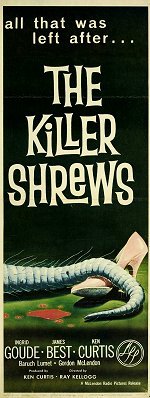 The
insert card was one of the more popular sizes created by the motion picture
industry. Inserts measure 14" x 36" and were printed on a heavy
card stock, which made them more sturdy.
The
insert card was one of the more popular sizes created by the motion picture
industry. Inserts measure 14" x 36" and were printed on a heavy
card stock, which made them more sturdy.
Because of their frameable size, they were used through
the lobby in special smaller displays.
HISTORY
Inserts derived from the earlier vaudeville 'longbills' which were announcements of the entertainment being presented. Here is an example of a 1910 'longbill' for Charlie Chaplin. In the late teens, the industry standardized them into the 14x36 size. Inserts were initially
printed using a brown-and-white rotogravure
process. In the 1920's, studios began producing their card stock materials
through a process known as photogelatin/collotype or heliotype.
Because this process utilized duller dyes than did
lithography, the colors of the inserts look better close up than they
do when viewed from a distance.
Inserts were a main tool in the advertising arsenal until
the 1980's. Prior to this time, most theatres had just one screen and one
feature movie. A lot more advertising attention was given to each movie, with
the theatre lobbies being covered with various sizes of advertising materials
for the one feature presentation. With the advent of multiscreen, multiplex
theatres, the same lobby advertising space had to be divided among all the
films being shown. As a consequence of this, movie studios opted to phase
out of most of the standard sizes and focus on one-sheets,
mini sheets, standups,
banners, etc.
Collectibility
Inserts are extremely popular with collectors for a number
of reasons. Because it is smaller than the one-sheet, it is a lot easier to
frame and display. Also, the insert is printed on a heavy card stock material,
which makes it easier to handle and hard to damage.
While it is preferable to have rolled inserts, a folded insert
is not uncommon and does not necessarily detract from its value if it was
folded when sent initially to the theatres. If an insert was initially sent
to theatres in rolled condition, and subsequently folded for some other reason,
it can detract from its value.
Points of Interest












